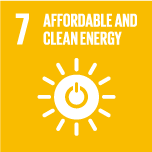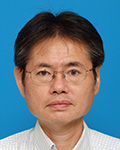Accuracy Improvement and Demonstration by Boring Survey of Steam-Spot Detection Technology for Locating Drilling Sites of Geothermal Production Wells
| Principal Investigator (Affiliation) |
|
|---|---|
| Co-investigator |
|
| International Coordinator |
|
| Research Institutions in Japan | Kyoto University / University of Hyogo / JAXA / JAMSTEC / Mitsubishi Materials Co / Mitsubishi Materials Techno Co |
| Cooperating Organization in Japan | Yamanote Museum / AIST / WEST JEC |
| Partner Country | Republic of Indonesia  |
| Research Institutions in Indonesia | Bandung Institute of Technology |
| Cooperating organization in Indonesia | Ministry of Energy and Mineral Resources of the Republic of Indonesia (MERE) / Center for Mineral, Coal and Geothermal Resources (CMCGR) / PT Geo Dipa Energi |
| Support Organization | JICA / Indonesian Institute of Sciences ( LIPI ) |
| General Description of the Research Project | For large decrease of carbon dioxide emission, utilization promotion of geothermal power is needed. This research aims to develop technologies for locating accurately suitable portion to drilling of production well for geothermal power generation from the ground surface by a combination of remote sensing, geochemistry, mineralogy, and numerical simulation. The portion is termed as Steam Spot. The Patuha geothermal field, West Java, Indonesia is selected as a study area, and the research will be advanced by collaboration with Bandung Institute of Technology and an Indonesian company. Research contents include 3D fracture modeling using high-precision topographic data, radon concentration measurement at many shallow drilling points, estimations of reservoir temperature and fluid origin by water and gas geochemistry, simulation for fluid flow and specification of liquid or vapor rich zones, and potential-map production of Steam-Spot existence by integrating these results using geostatistical methods. Exploration drilling sites are narrowed at three (tentative) based on subsurface resistivity distribution by magnetotelluric survey at high potential zones. The existence potential of Steam-Spot is verified through temperature, pressure, and mineralogical data obtained by the drillings down to about 500 m depth. Social implementation of the research result will contribute to large increase of geothermal power generation by reducing resource-exploration cost. |
| Links |
KOIKE Laboratory Kyoto Univ. [Technology Development of Steam-spot Detection and Sustainable Resource Use for Large Enhancement of Geothermal Power Generation in Indonesia] Institut Teknologi Bandung SATREPS Project JICAODA見える化サイト |
| Project Updates | (2021/3/8) Research Progress 2020 |






